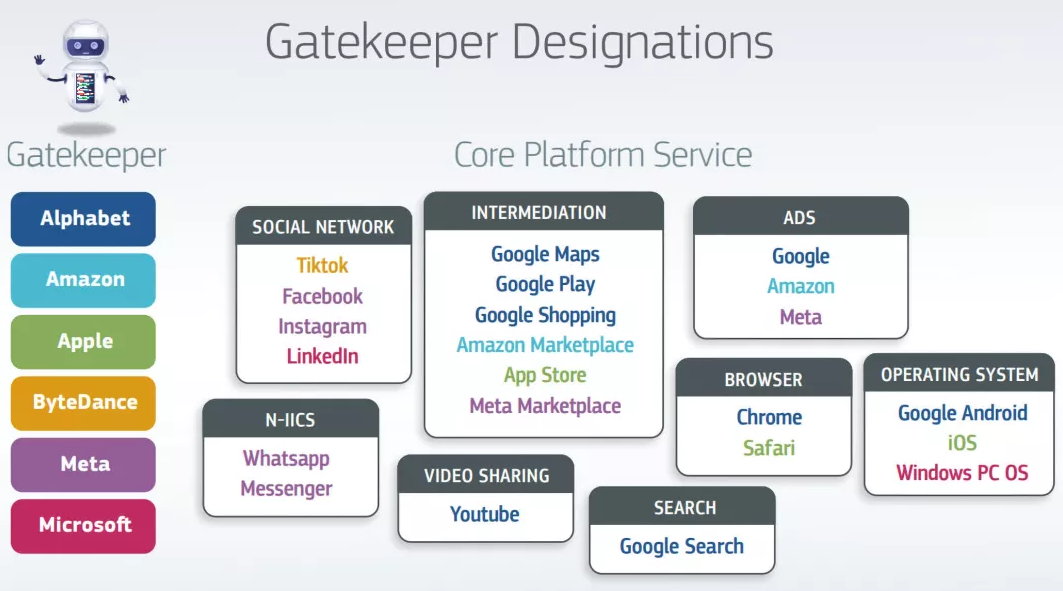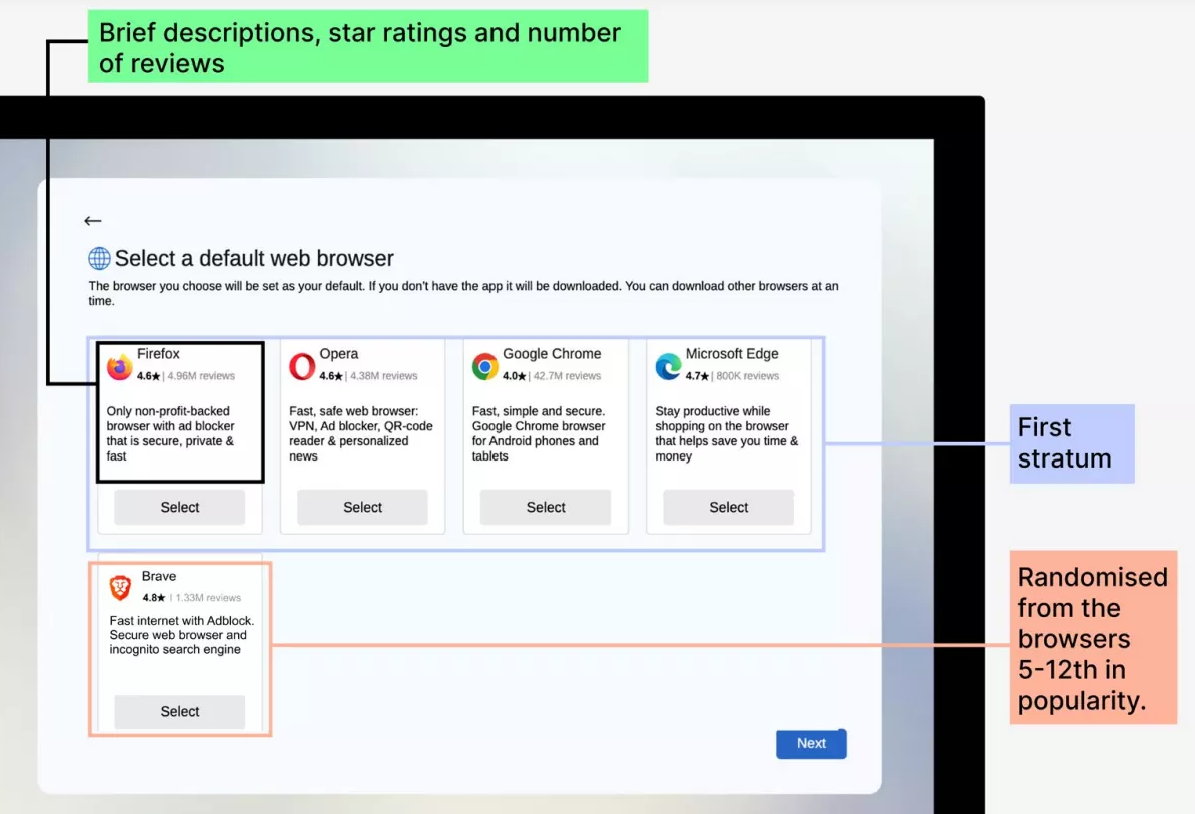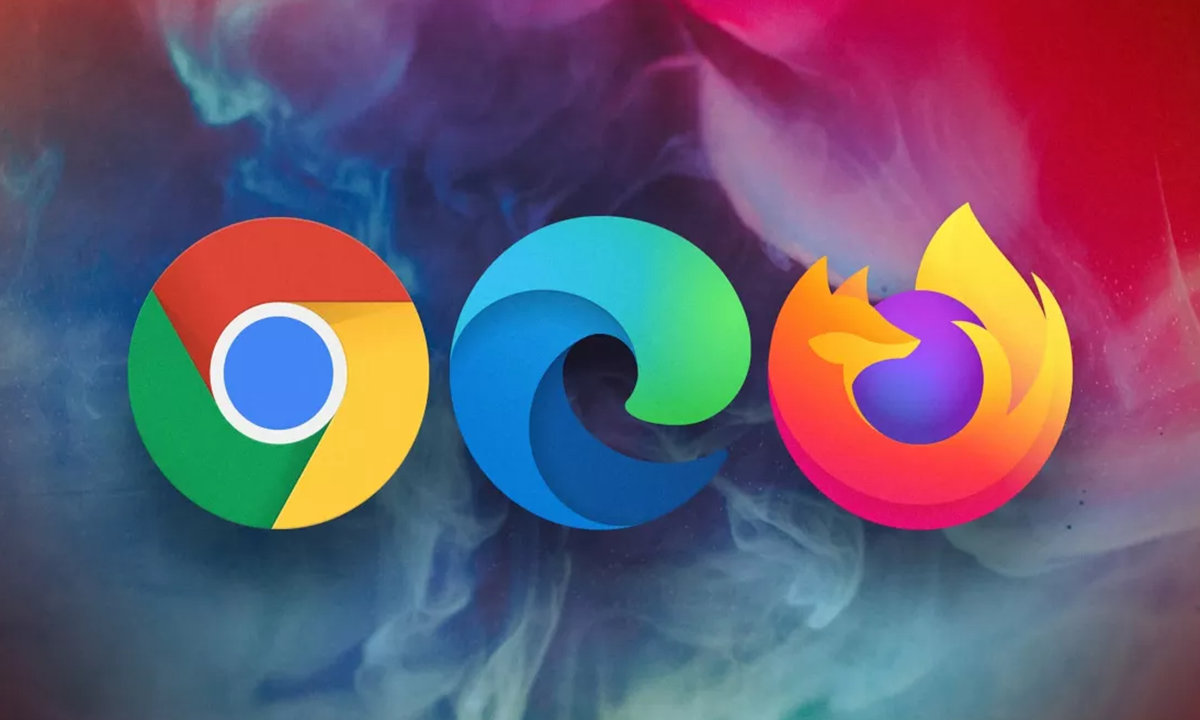Major operating system manufacturers will have to design web browser selection screens for European consumers. This is foreseen by the European Union’s Digital Markets Act (DMA), which will be launched in 2024. Sound good? Yes, but with nuances. If one really wants to offer free choice, design matters a lot, as Mozilla explained in an article warning against using “dark patterns.”
The new European DMA Act will introduce new rules for “control” (or try to) the big platforms. It defines a group of the most powerful technology companies as “gatekeepers”. To the first six designated, Alphabet, Amazon, Apple, ByteDance, Meta and Microsoft, others may be added in the future to guarantee the proper functioning of the market from antitrust conditions and others such as freedom of choice.

Apple on iOS; Google on Android and Microsoft on Windows must offer browser selection screens to users. The goal of these types of designs is to allow the user to choose an alternative development to that which is included by default in the operating system. You will remember well voting screen a section of users who experienced a “browser war”, first between Nescape against Microsoft’s Internet Explorer and then the rest (Chrome, Firefox, Opera…) against it.
Browser selection screens
They are welcome to allow the user to choose, but they must be properly designed. to understand us which provide real options in a transparent and non-manipulated manneras often happens when faced with the use of unethical “dark patterns” that deceive users.
We’ve seen them in Windows to improve Edge and everywhere and from any provider. Earlier this year, the FTC fined Epic Games $245 million for using dark patterns to trick Fortnite players into making unwanted in-game purchases. More recently, the agency sued Amazon for using a similar technique to force users to sign up for Prime and then make it difficult to opt out. There are all kinds of examples.
Mozilla, the developer of Firefox, published a study with data obtained from a survey of 12,000 users in Germany, Poland and Spain who use Android or Windows. «Basically what this research shows is that the design details of browser selection interventions are absolutely critical«they assure.

In an experiment, Mozilla found five key things as:
1.- Providing more information and a wider range of browsers on these screens influences user choice, increases people’s satisfaction and how often independent browsers are chosen. The order in which the browsers are presented also has a great influence on the selection.
2.- The display of the screen is also an important factor, because people who see it after clicking on the pre-installed browser choose it as default much more often than those who get this option during the setup.
3.- Most people prefer to see a lot of information about each browser on these screens, such as descriptions, star ratings and number of reviews.
4.- Selected screens increase satisfaction (98% of people prefer them) without significantly increasing the time needed to configure the device.
5.- Most importantly, a well-designed browser selection screen steers users away from browsers owned by the operating system or device manufacturer and increases the share of independent browsers.
It is evidently proven design matters and Mozilla wants to alert European regulators about its use in upcoming browser selection screens. We’ll see how they are eventually implemented and if it doesn’t open up – again – another browser war.















